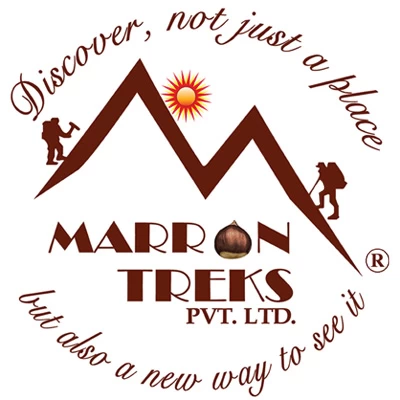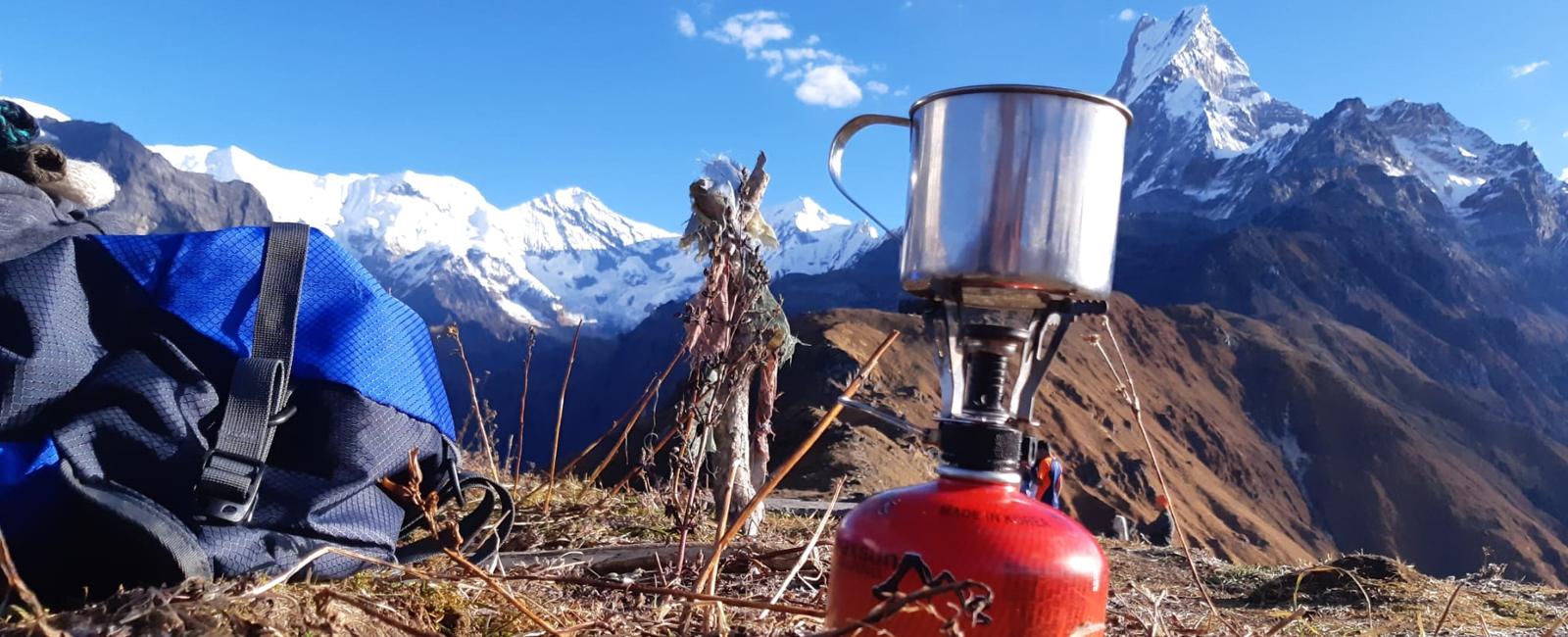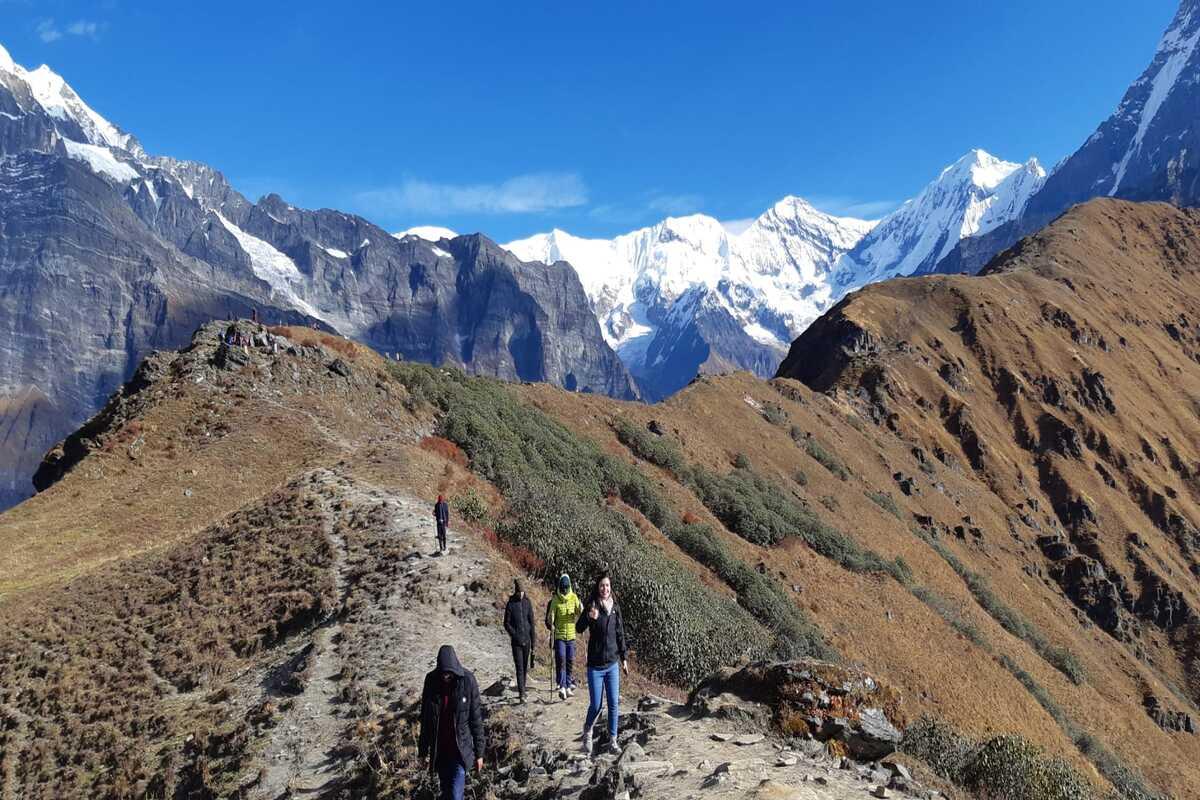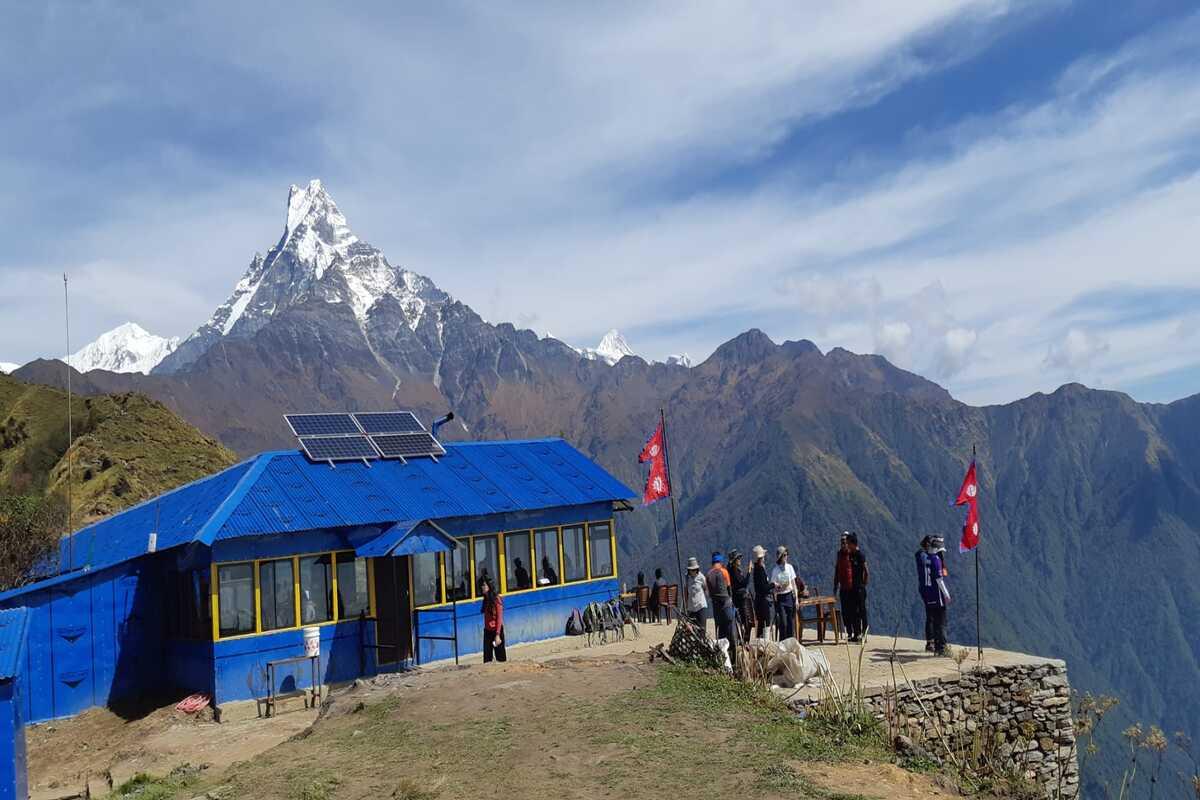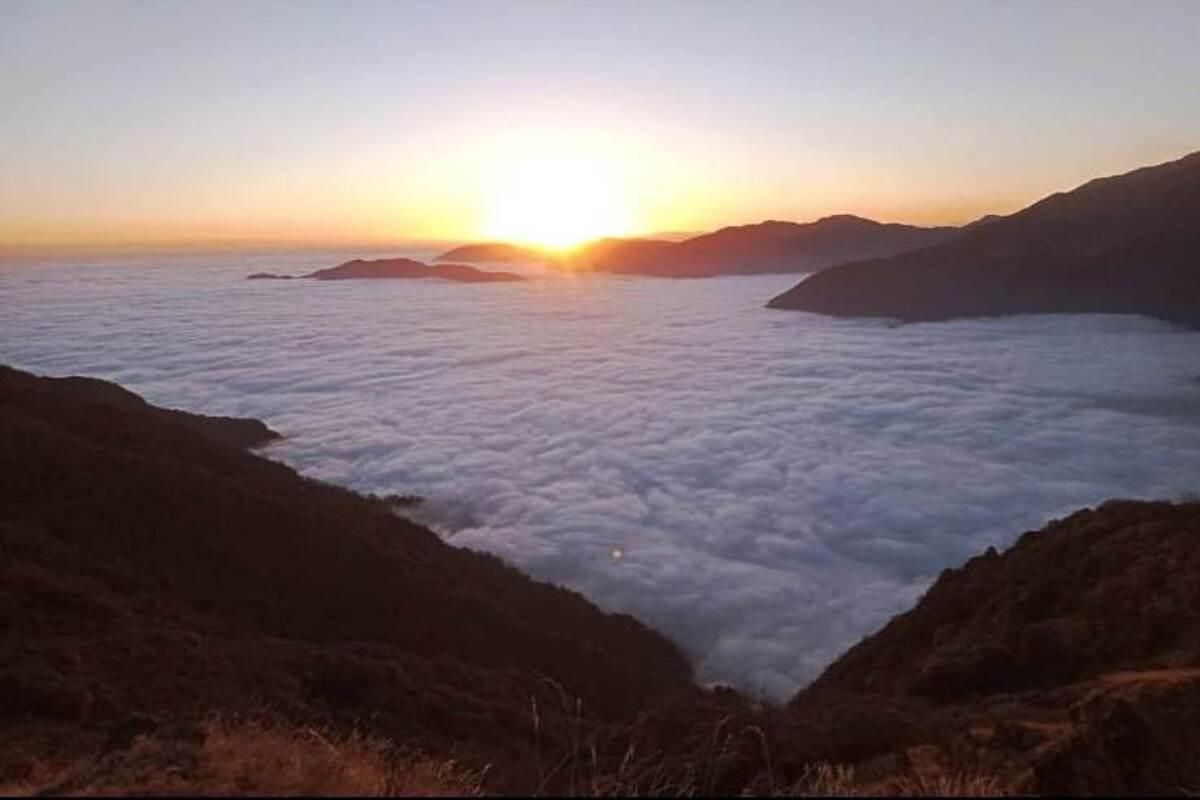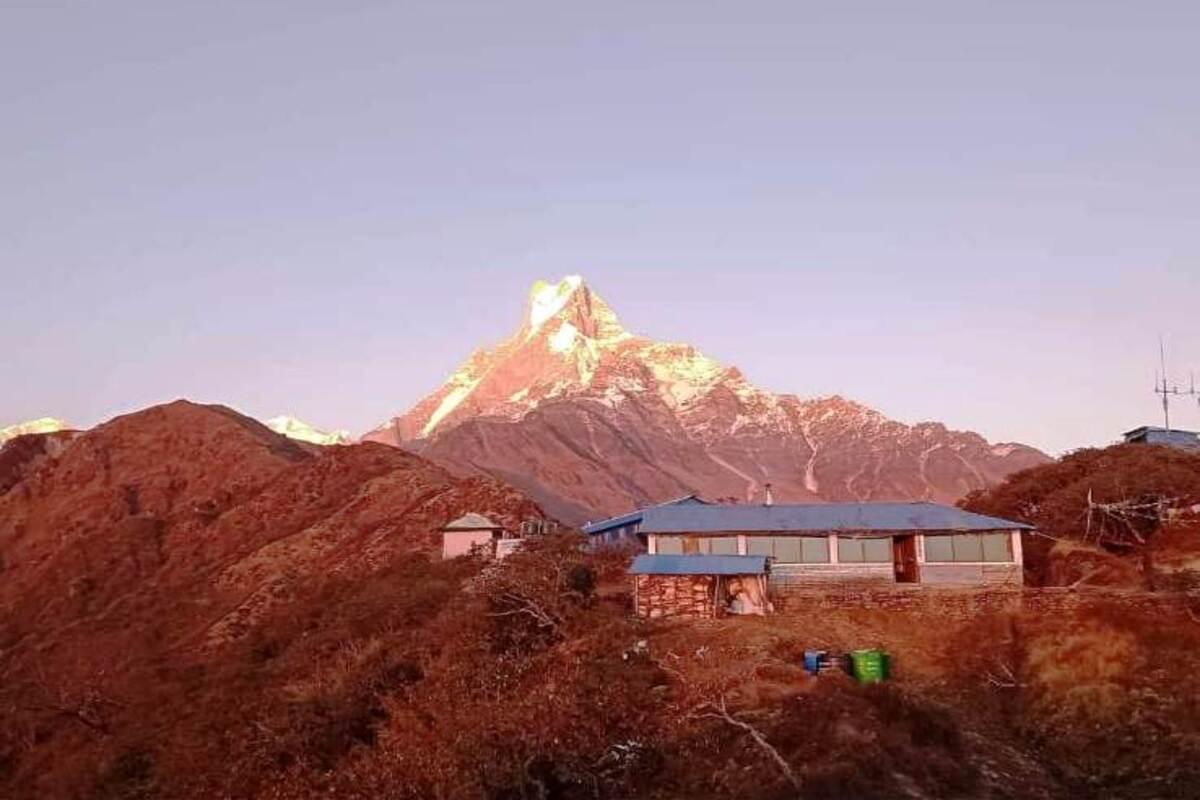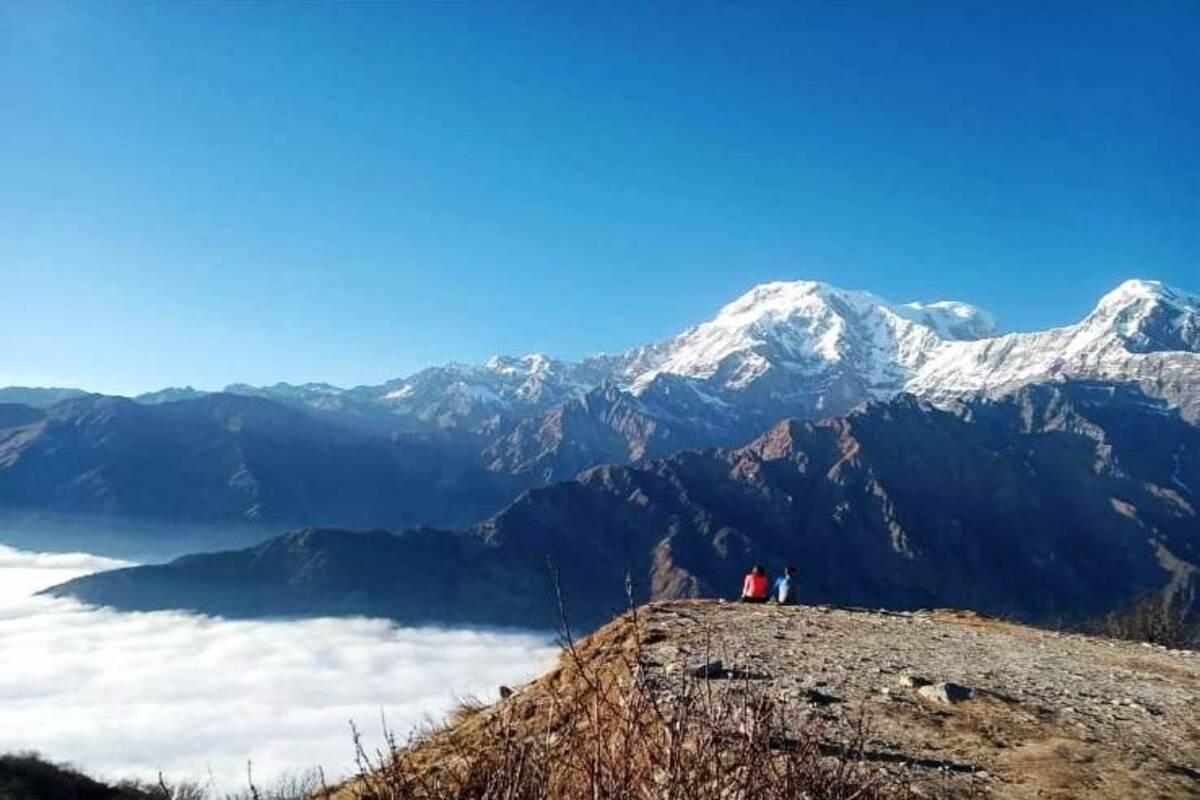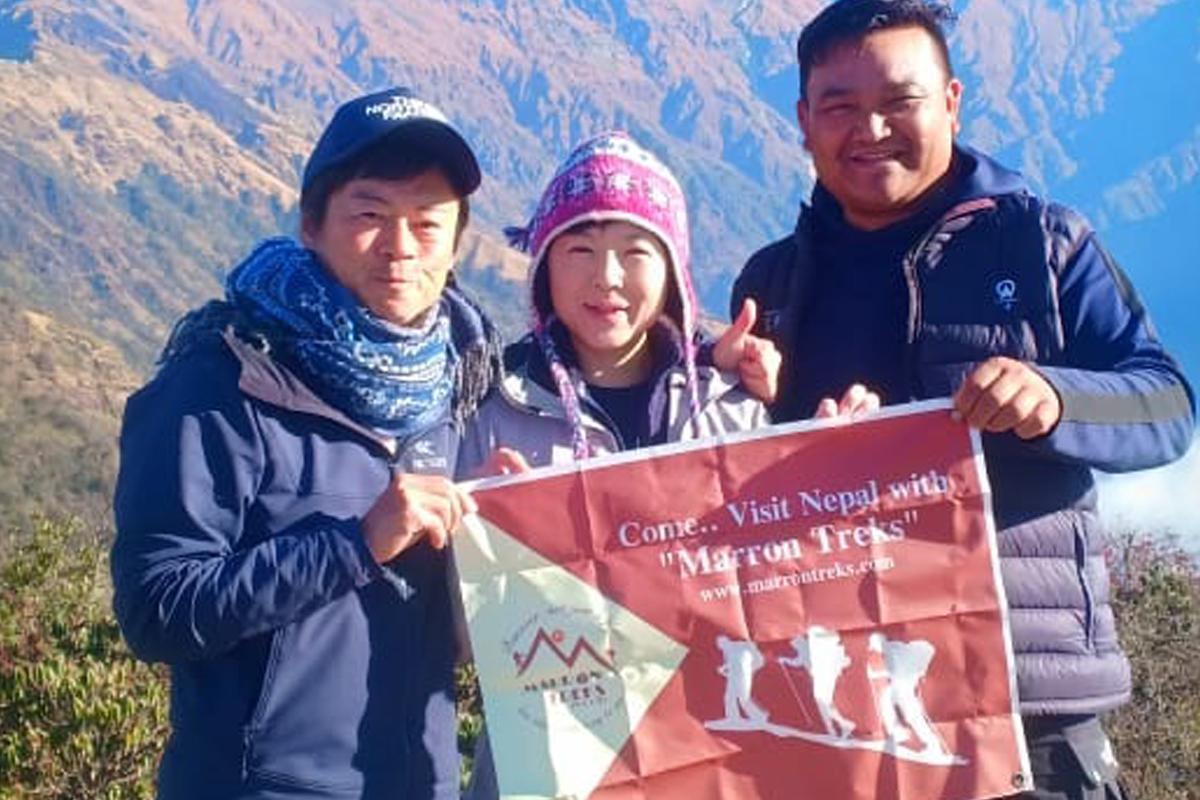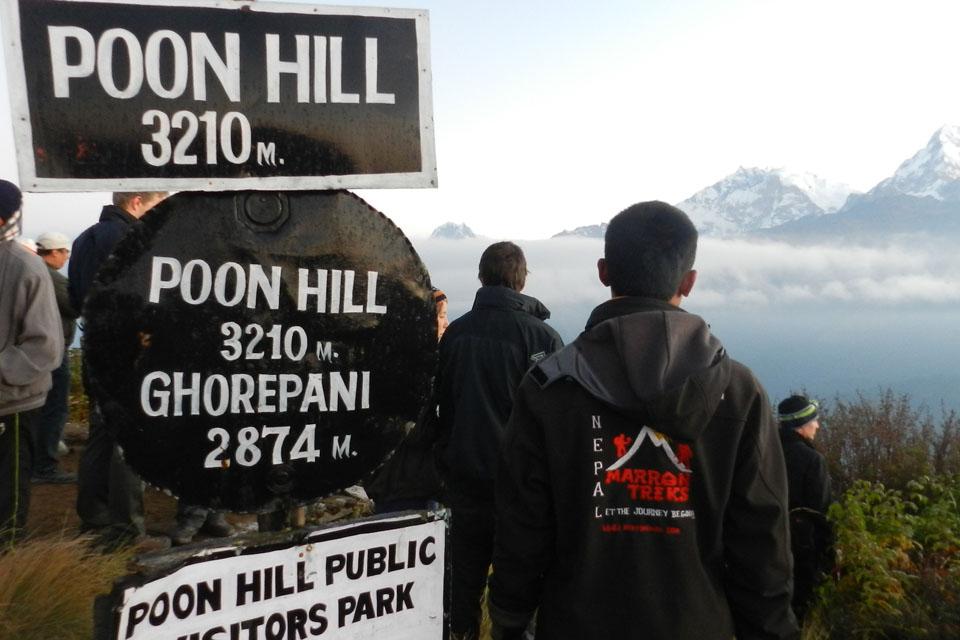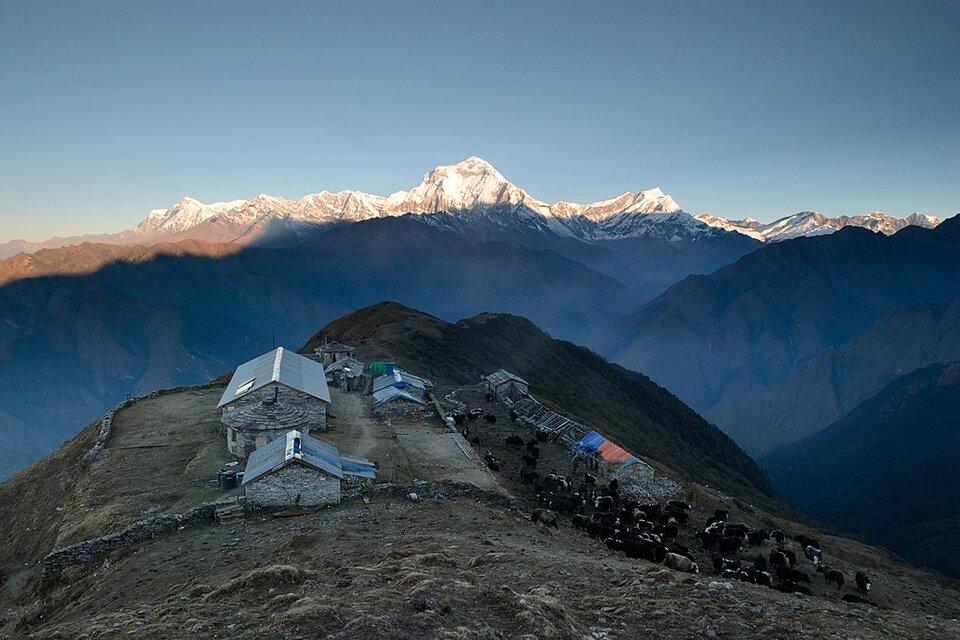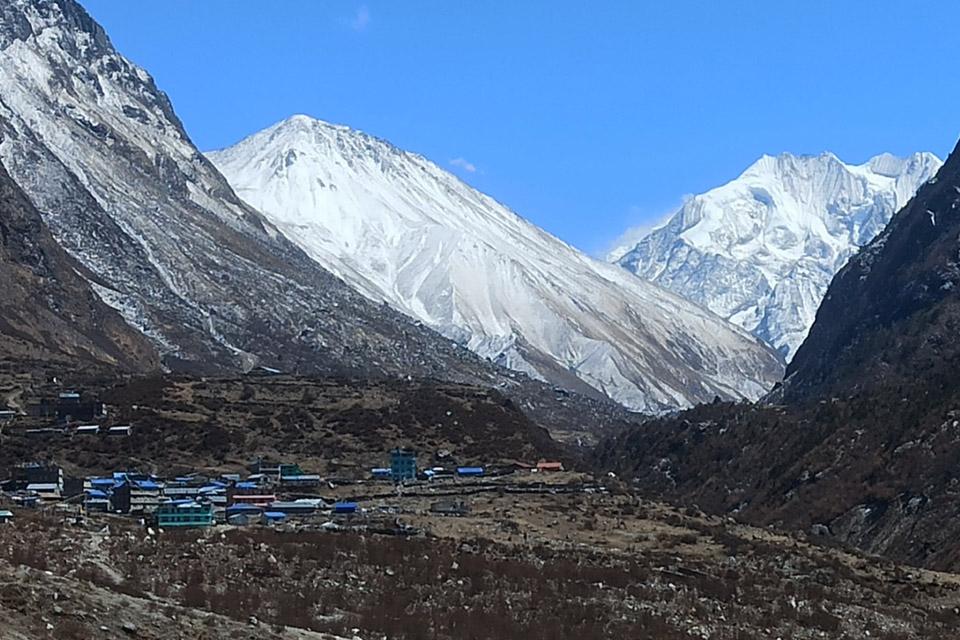Mardi Himal Trek
Trip at a Glance
Mardi Himal Trek is well-liked, short and less crowded trekking trail in the Annapurna region. Trek to Mardi Himal offers remarkable mountain panorama of peaks like the Annapurna Range, including Machapuchare (Fishtail) and Mardi Himal. The trekking trails passes through lush forests, rushing streams, and walk along steep ridges as one gets closer to the base of Mardi Himal.
The view point in Mardi Himal trek offers the most spectacular panorama with the majestic Annapurna range being very close and other peaks like Machhapuchhre, Dhaulagiri etc. The trek is a perfect combination of some remarkable landscapes from lush rhododendron forests to high alpine meadows and an unbeatable Himalayan panorama.
The trek to Mardi Himal begins after a scenic drive from Pokhara to Kande and a trek to Australian Base Camp. You will then cross over several night stopovers like Forest Camp, High Camp. From High Camp you need to get to the View Point at 4500 meters of Mardi Himal trek which is the prime highlight of the trek. The hike is challenging because you are walking on a narrow and rocky trail. Upon reaching the top you will be rewarded with a great Himalayan panorama.
Mardi Himal Trek is a hidden gem and off-the-beaten-path trek in the Annapurna region, offering spectacular mountain views, diverse landscapes, and a more peaceful trekking experience with less-crowded trails.
Mardi Himal Trek Highlight
- Pokhara- the most beautiful lakeside city & natural wonder of Nepal.
- Hike through scenic Himalayan trail with spectacular mountain views.
- Machhapuchhre, Mt. Annapurna south, Dhaulagiri, Annapurna I and others.
- Newly developed trek route with less crowd.
- Enjoy hike along Rhododendron forest during February, March & April.
- Witness majestic Himalayan panorama.
Itinerary
Day 01: Arrival in Kathmandu (1400m)
Day 02: Drive or fly from Kathmandu to Pokhara
Day 03: Drive to Kande (1,770m/1 hrs) & trek to Deurali (2,125m) via Pothana 4/5 hrs walk
Day 04: Trek from Deurali to Low Camp (2,990m/6-7 hrs)
Day 05: Trek from Low Camp to High Camp (3550m/6-7 hrs)
Day 06: Hike to Mardi Base Camp (4500m) & back to High Camp (3550m/7-8 hrs)
Day 07: Trek from High Camp to Siding village (1700m/7 hrs)
Day 08: Drive from Siding Village to Pokhara (822m/3. 5 hrs)
Day 09: Drive or fly to Kathmandu from Pokhara
Day 10: Final Departure
Arrive in Kathmandu and one of our representatives will receive you and then transfer to your hotel in Kathmandu. The rest of the time is free to explore the city where your hotel is located which is usually at Thamel – the popular tourist hub in Kathmandu where every needs and facilities for the tourist are located like hotels, pubs, restaurants, departmental stores, trek gear shops etc. Or you can simply rest at your hotel if you are jet lagged and get ready for an amazing Himalayan trek.
Early in the morning, drive from Kathmandu to Pokhara. The journey takes you through scenic landscapes, offering glimpses of rural life, terraced fields, and stunning views of the Himalayas (weather permitting). The drive is around 200 kilometers (125 miles) long and usually takes between 6 to 7 hours, depending on road conditions and traffic. Alternately, you can fly from Kathmandu to Pokhara which is 25 minutes flight.
After breakfast, drive to the trek-start point i.e Kande which is 1.5 hour's drive from Pokhara and start the trek to Deurali passing along Pothana village. The hike today is relatively easy with about 4-5 hours walking. It’s a well-marked trail and passes through beautiful forests and small villages. En route witness the local flora and fauna including rhododendron trees and various bird species. Upon reaching Deurali, check-in lodge.
After breakfast start the trek to Low Camp from Deurali. The trail is going up through forest leading through the quiet trail of oak, maple, rhododendron and hemlock forests. If luck favours then you might encounter wildlife like leopards, deer, monkeys, various species of birds and others. Soon Low Camp is reached for an overnight stay.
The trail today continues through the dense forest to High Camp from Low Camp ascending upwards. The forest is filled with rhododendrons and trees covered in moss and lichen. The trail ascends towards west with the amazing views of Annapurna South and Hiunchuli Himal. The trail goes through Mardi Himal Ridge with the sight of beautiful rhododendron bushes. The colorful Danphe can also be seen along the way. Soon High Camp is reached where lodges are bigger than those located at Lower Camp. From High Camp the views are superb of peaks like Annapurna South, Hiunchuli Himal and Mt. Machhapuchhre.
Wake up early and hike to Mardi Himal Base Camp (4,500m). The trail is steep and challenging but rewarding, as it offers up-close views of Annapurna I (8,091m), Machhapuchhre ‘Fishtail’ (6,993m), Mardi Himal (5,587m). It’s a challenging hike walking on the narrow and rocky trails. But the view you will witness at the end of hike makes it all worth it. Mardi Himal is scared peak in Nepal and no one has climbed it due to it’s sacred value. Descend back to High Camp.
After breakfast, trek to Siding village through a steep descend walking through the forest heading to Modi Khola River. Descending further will soon reach Siding Village.
After breakfast, take a scenic drive to Pokhara (3–4 hours) through beautiful countryside, terraced farmlands, and small villages. Upon reaching Pokhara, check-in hotel and the rest of the time is free to explore.
After breakfast drive to Kathmandu from Pokhara retracing the same highway route which you took earlier. Upon reaching Kathmandu, check-in hotel and the rest of the time is free to explore or rest. In the evening is Farewell Dinner at one of the authentic Nepali Restaurant with a cultural show.You can also drive by a private vehicle.
Option: You can fly to Kathmandu from Pokhara (25 minutes flight)
The trip concludes and our office representatives will take you to the international airport in Kathmandu to catch your onward flight to your next destination or fly back home. You need to be at least 3 hours prior to your flight time at the airport.
Thank you for visiting Nepal and we hope your Himalayan Holiday has come true. Have a safe flight back home!
What is included?
- Airport pick-up and drop services.
- Hotel accommodations in Kathmandu & Pokhara on Twin-Share Basis with breakfast.
- Kathmandu/Pokhara/Kathmandu transfers by a tourist bus. (Option: Private vehicle/Flight)
- Pokhara/Deurali & Siding/Pokhara transfers by private vehicle.
- All trekking accommodations with Breakfast/Lunch/Dinner at local lodges.
- Four seasonal sleeping bags (to be returned after trip completion) & Marron Treks duffel bag
- A comprehensive medical kit (will be carried by the trekking guide)
- Experienced Government licensed English Speaking Guide & Porter (1 porter for two people) including their food, accommodation, salary & insurance.
- All applicable tourist fees, ACAP permit & TIMS fees necessary for trekking.
- Farewell dinner with Nepalese cultural program.
- All government and local taxes.
What is not included?
- International airfare
- Personal travel insurance.
- Lunch & dinner in Kathmandu or Pokhara.
- Emergency rescue evacuation (to be covered by the client's travel insurance).
- Nepal entry visa fee – Visa can be obtained upon your arrival at the Tribhuwan International Airport in Kathmandu. (USD30 for 15 days)
- Personal insurance and other expenses of a personal nature (phone calls, laundry, battery recharge, bottle or boiled water, hot shower etc.)
- Bar bills, alcoholic drinks & beverages.
- Tips for guides and porters (Tipping is expected).
Route Map
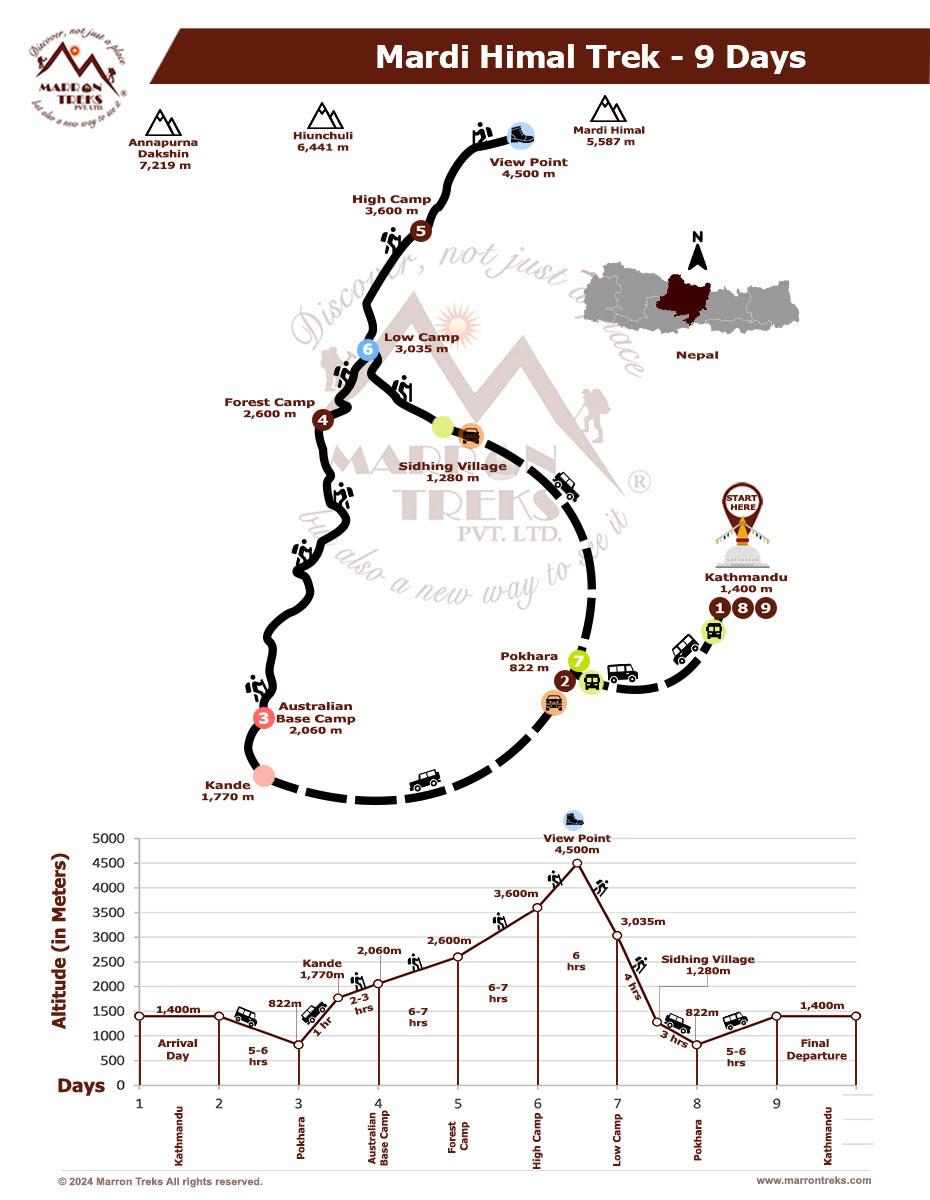
Trip Info
Accommodation
While you are in Kathmandu, we opt to accommodate you in 4- or 5-star hotels like Hotel Royal Singhi (4-star), Hotel Manaslu (4-star), Radisson (5-star), Yak & Yeti (5-star), or similar. During the trek, you will be accommodated in a local mountain lodge, better known as Tea House. These lodges and teahouses provide good services and are equipped with basic amenities. We will endeavor to provide you with the best accommodation available along the route so that you get a good night’s rest in a hygienic milieu.
Meals
We never compromise the quality of food or the health of the trekkers as well as the crew members. Generally, we opt for the fresh and nutritional local community food available. You could make your delicious pick from an array of traditional foods like Sweet potatoes, buckwheat barley, etc. This way, you could not only get a real sense of the local culture and life patterns but also contribute to promoting the locally available resources of organic food and beverages. Besides, a wide range of Continental, Chinese, Italian and Indian cuisines like Pizza, Spaghetti, French Fries, Soups, Breads, Masala curry, etc. are also available in the restaurants for your retreat.
Acclimatization
Altitude sickness is a serious risk while trekking in the Himalayas. It's important to acclimatize properly by spending a few days at lower altitudes before heading higher. By spending time at lower altitudes before pushing higher, your body has time to adjust. Our trekking packages have enough acclimatization days planned where you'll be spending a day or two at lower altitudes, allowing your body to adjust to the increasing altitude.
Electricity & drinking water
For an additional cost, you can use the electricity in all tea houses and lodges to recharge your batteries. The lodges have packaged mineral water for sale, or you can fill your bottle with boiling water. To make water drinkable, you can use water purification tablets too. But, due to hygienic issues, you should avoid drinking water from taps, rivers, or wells in trekking areas.
Communication
At lodges, restaurants, and hotels, Wi-Fi is available for an additional fee in the most popular trek regions, like Everest, and Annapurna. However, at high elevations, phone calls are the only means of connection. Our office in Kathmandu is in constant communication with your trek guide. In Kathmandu, you can purchase a local sim card for communication purposes. At high elevations, the mobile signal might not be as strong, though.
Luggage
Our porters are paired with one trekker for every two hikers, and one porter can safely carry 30 kg maximum weight. Therefore, we advise you to fill your duffle bag not more than 15 kg with your belongings. You may carry a small backpack with your valuables and informational documents. The things you are not taking along on the trek can be stored in a hotel in Kathmandu free of cost.
Typical Trek Day
Mostly your trek day starts with breakfast at 7-8 am, followed by a 3-4 hour morning trek. Lunch break is around an hour, then you continue trekking to your destination for the day. After reaching the teahouse lodge, you can relax, explore nearby areas, and enjoy dinner at 6-7 pm. Evenings involve socializing, a trek briefing, and leisure activities before bed.
Travel Insurance
It is advised that you arrange your travel insurance before leaving your homeland. The main thing is to make sure that your insurance covers you for both- medical and evacuation costs. Having travel insurance with you makes your trip secure and hassle-free.
Our Guides
Guides play a significant role during the trek. They are the ones who literally decipher the trekking codes for you so that you can actually connect with nature, culture and people along the way. We have helpful and dedicated trekking guides who are very well-versed in the culture, life patterns and every single detail pertaining to the trek region you are traveling in. Thus, in the company of our professional Sherpa guides, your trek becomes not only entertaining but also equally informative.
Porter and Staff Care
When it comes to high-altitude trekking, porters and staff members make up a pivot. Marron Treks ensures that all the porters and staff members going to high altitudes are provided with adequate clothing and equipment. All our field staff are covered by insurance.
